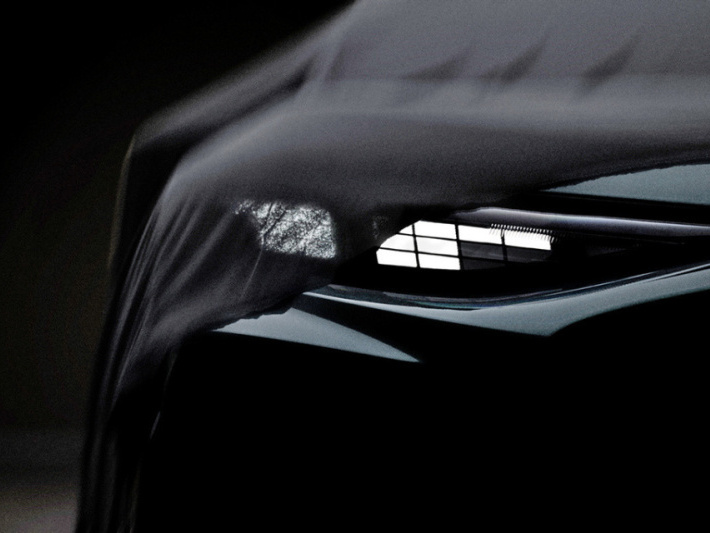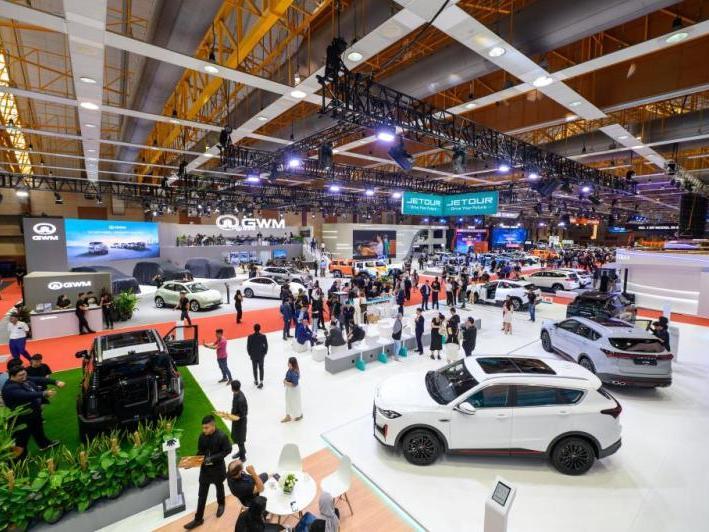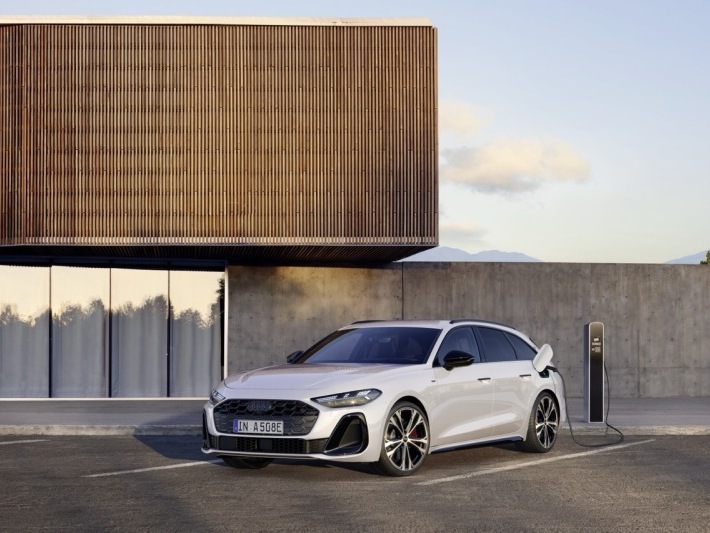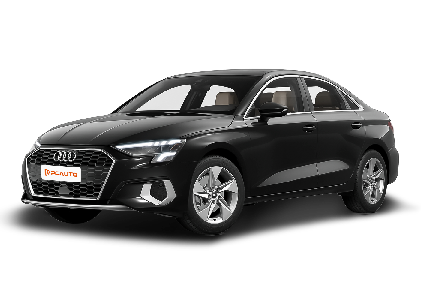Q
Is Audi a sedan or SUV?
Audi isn't just a sedan or SUV. As a luxury car brand, Audi offers a rich variety of vehicle models covering multiple types. For instance, most models in the A - series are sedans. Take A3 as an example, which is available in a sedan version. It features excellent handling, a low center of gravity, and smooth and elegant lines, making it ideal for city driving. A4 is a mid - size sedan that focuses on balancing performance and luxury.
On the other hand, the Q - series belongs to the SUV category. The Q3 is a compact SUV, combining both sportiness and practicality. The Q7 is a large - sized SUV with a spacious interior and a seven - seat version. It has good passability, a high seating position, and a wide field of vision, capable of handling some complex road conditions.
In summary, different vehicle series under the Audi brand meet the diverse needs of consumers.
Special Disclaimer: This content is published by users and does not represent the views or position of PCauto.
Related Q&A
Q
What's the lifespan of Audi A3's engine?
The service life of Audi A3's engine can be different. Under normal maintenance and usage conditions, it can run for about 300,000 kilometers or be used for around 10 years without significant problems. The prerequisite is that you use high - quality engine oil and filters and replace them on time, as the engine requires proper lubrication and clean intake air. For example, using fully synthetic engine oil that meets Volkswagen standards (such as 502 00, SAE 5W40) can improve the engine's durability.
In addition, the driving environment is also crucial. Harsh conditions like extreme high or low temperatures, dusty areas, or traffic with frequent stops and starts may shorten its service life. Similarly, driving habits also have an impact. Aggressive driving styles with rapid acceleration and hard braking will cause more wear and tear on engine components. On the contrary, gentle driving and allowing the engine to properly warm up and cool down can help extend its service life.
Q
Is Audi A3 a small or medium car?
The Audi A3 is a small car, specifically a compact vehicle. It belongs to the C-segment category. Its body length is 4,458 millimeters, width is 1,796 millimeters, height is 1,416 millimeters, and wheelbase is 2,637 millimeters. These dimensions classify it as a compact car. Compact cars like the Audi A3 are well - known for being more suitable for urban driving and typically having lower fuel consumption. They're perfect for daily commuting and can be parked in tight spaces. The size of the A3 also means it generally requires less storage space and is easier to be driven on congested roads. Even though the Audi A3 is a small car, it still offers a high level of comfort, safety features, and performance, which makes it a popular choice for car buyers who value the combination of practicality and luxury.
Q
Does Audi A3 deliver potent power output?
Yes, Audi A3 can be regarded as a car with potent power. 2019 Audi A3 Saloon 1.4 TFSI is equipped with a 1.4-liter turbocharged engine, which can deliver 150 horsepower and a power output of 110 kilowatts. It has a top speed of up to 224 km/h and can accelerate from 0 to 100 km/h in just 8.2 seconds. Such performance is adequate for daily driving, enabling smooth acceleration both on urban roads and highways. Moreover, with the engine's torque output at 1500 - 3500 revolutions per minute, it can provide instant power when needed. The dual-clutch transmission (DCT) also helps achieve seamless gear shifts, offering a smooth driving experience. Although it may not be a high-performance sports car, it can provide sufficient power to meet the needs of most drivers, whether for daily commuting or weekend road trips. Combining its power with features like front-wheel drive and independent suspension, it becomes a well-balanced choice in terms of performance and handling.
Q
Is Audi A3 a comfortable car?
Audi A3 can be considered a comfortable car in many aspects. It has various features that bring a pleasant driving and riding experience. The front seats offer 4-way electric adjustment for the driver and passengers, making it easy for them to find a proper sitting position. The dual-zone automatic air - conditioning system in the front row ensures that the driver and front - seat passengers can enjoy a comfortable temperature.
In terms of driving quality, it is equipped with a MacPherson independent suspension at the front and a multi - link independent suspension at the rear, which can absorb shocks and handle uneven roads, providing a smooth driving and riding experience. There are also some comfort - enhancing configurations inside the car. The fully digital instrument cluster and the touch - controlled center console screen provide a modern and convenient operating interface.
However, for some people, the rear - seat space with a 60:40 split - folding function may seem a bit compact. And the small trunk volume can be a drawback for those who need to carry a large amount of stuff. Overall, despite the certain limitations in space, the Audi A3 can still offer a good comfort experience for daily commuting and short trips.
Q
Which one is better, Audi A3 or A4?
Audi A3 and A4 each have their own advantages, making it difficult to simply judge which one is better. A3 is a compact car with a guide price of RM 231,360. It has dimensions of 4458*1796*1416mm and a wheelbase of 2637mm. It's small and nimble, perfect for city commuting. The interior has a strong sense of technology, with a simple layout of the center console. The three - spoke leather multi - function steering wheel highlights its sporty character. It's equipped with a 1.4T engine, and the power is sufficient for daily use.
On the other hand, the A4 is a mid - sized car, usually with a higher price. It has dimensions of 4858*1847*1439mm and a wheelbase of 2908mm, offering more spacious interior space, especially in the rear seats where passengers can enjoy a more comfortable ride. The interior is luxurious, and the configuration is more abundant, such as a panoramic sunroof that can be opened and leather seats. In terms of power, it's equipped with a 2.0T engine, providing stronger power.
If you have a limited budget and value individuality and flexible handling more, A3 is a great choice. However, if you pursue a sense of luxury, large space, and strong power, and your budget allows, the A4 would be more suitable for you.
Q
Which model year of Audi A3 is the best?
It's difficult to say which model year of Audi A3 is the best, as it depends on personal needs and budget. If your budget is limited, the models from 2014 to 2016 are more suitable. They have an affordable price and a relatively stable resale value. However, these early models may have some minor problems like abnormal noises and oil leaks. You need to carefully check the vehicle condition when purchasing. If you pursue quality and performance, the models from 2017 to 2019 are a good balanced choice. Take the 2019 Audi A3 Sedan 1.4 TFSI as an example. It's priced at RM 231,360. Its top speed can reach 224 km/h, and it takes 8.2 seconds to accelerate from 0 to 100 km/h according to the official data. The official combined fuel consumption is 4.9L/100km. It is equipped with rich configurations, such as 6 airbags, engine start - stop technology, a multi - function steering wheel and so on. Later versions, like the 2025 model, may be more advanced in terms of power and technological configurations. For instance, it's equipped with a new engine, with more stable and smooth power tuning. It offers better stability and noise insulation during high - speed driving, providing a more premium overall driving experience.
Q
Does Audi A3 have high maintenance cost?
The maintenance cost of Audi A3 is relatively high. It provides a 5 - year, unlimited - mileage warranty. The first maintenance is required at 10,000 kilometers or 1 year, and a free minor adjustment is provided, which includes engine oil and filter replacement with no labor cost. After that, the maintenance interval is also 10,000 kilometers or 1 year.
The cost of a minor adjustment at the original factory is about RM1,463. The cost of a routine maintenance at 60,000 kilometers is about RM11,645. The maintenance cost per 10,000 kilometers is about RM1,940, and the price of a routine maintenance at 100,000 kilometers is about RM21,745.
Compared with some models in the same class, the frequency of some maintenance items for the Audi A3 is higher and the cost is a bit more. For example, its maintenance cycle is 10,000 kilometers or 12 months, while the BMW 1 Series has a maintenance cycle of 15,000 kilometers or 12 months, so the engine oil and filter of the Audi A3 need to be replaced more frequently.
However, if you choose non - original maintenance, the cost can be reduced by about 30%. But you need to carefully choose the repair shop. When the car is used for a long time or has covered a long distance, the maintenance cost will increase. Reasonably planning the maintenance schedule and developing good driving habits can control the maintenance cost to a certain extent.
Q
Is Audi A3 bigger than Mercedes A Class?
Body dimensions and wheelbase are often used to compare the size of car models. Take the 2023 imported Mercedes - Benz A - Class A200 Fashion Hatchback and the 2022 Audi A3 Sportback 35 TFSI Luxury Elegant Edition as examples. The length, width and height of the Mercedes - Benz A - Class are 4419mm × 1796mm × 1432mm, with a wheelbase of 2729mm. The length, width and height of the Audi A3 are 4343mm × 1815mm × 1458mm, and its wheelbase is 2630mm. As can be seen, the Mercedes - Benz A - Class has advantages in length and wheelbase, which means it might have more spacious longitudinal interior space, offering a more comfortable ride for passengers, especially in the rear seats. However, the Audi A3 is slightly wider, so its interior lateral space may be a bit better. Generally speaking, the overall space of the Mercedes - Benz A - Class is larger. Of course, the dimensions of different versions of car models may vary. When buying a car, you can make a detailed comparison of the sizes of specific models.
Q
Is Audi A3 a good choice for beginners?
Yes, Audi A3 is a great choice for beginners. Priced at RM 231,360, it makes people get a luxury car without too much cost. It can reach a top speed of 224 km/h and accelerate from 0 to 100 km/h in just 8.2 seconds, so its performance is adequate for meeting daily driving needs.
The car is equipped with a range of standard safety features, such as six airbags, an Anti - lock Braking System (ABS), and a Electronic Stability Control system, which are crucial for novice drivers. Automatic air - conditioning, a full - LCD display, and a touchscreen add to comfort and convenience. The 4 - way power - adjustable front seats and 60:40 split - folding rear seats offer flexibility.
The compact size of the Audi A3 makes it easy to handle and park in traffic, which is especially beneficial for new drivers. However, like any car, it also has its disadvantages. But overall, it strikes a good balance between luxury, functions, and driving performance for beginners.
Q
Is Audi A3 faster than A4?
Normally, Audi A4 is faster than A3. The 2019 Sedan 1.4 TFSI version of the Audi A3 is equipped with a 1.4T engine, with a maximum horsepower of 150Ps, a top speed of 224km/h, and an official 0 - 100km/h acceleration time of 8.2 seconds. While the Audi A4 is generally equipped with a 2.0T engine, with a maximum horsepower of 252Ps, which offers stronger power. The greater horsepower enables the A4 to display better power performance in scenarios like acceleration and overtaking, achieving a faster speed. However, the actual driving speed of a vehicle is also affected by various factors such as driving style, road conditions, and vehicle load. For example, in congested traffic, the compact body of the A3 may allow it to move through more nimbly, but this doesn't mean it's truly faster. On open roads like highways, the power advantage of the A4 can be more fully utilized.
Popular Cars
Model Year
Car Compare
Car Photo
Latest Q&A
Q
Does the 2019 Golf GTI have a timing belt or chain?
The 2019 Golf GTI uses a timing chain instead of a timing belt—a design that offers better durability and lower maintenance costs. Typically, a chain lasts as long as the engine itself and rarely needs replacement, whereas a belt requires inspection or replacement every 60,000 to 100,000 km. If neglected, a worn belt can snap and cause severe engine damage.
VW’s EA888 engine family has long relied on chain-driven systems, which are relatively quiet and highly reliable. That said, it’s crucial to periodically check the tensioner’s condition. Some earlier models experienced timing issues due to tensioner design flaws, but this was addressed in the 2019 version.
For performance enthusiasts, a chain system handles high-revving stress better, making it a common choice for hot hatches like the GTI. For daily driving, just stick to VW 50400/50700-spec oil as recommended in the manual—proper lubrication keeps the chain system healthy long-term.
One heads-up: If you hear noticeable metallic rattling near the front of the engine, have the guides or tensioner inspected ASAP. Unlike the telltale belt squeal before failure, this noise is a classic sign of chain-related wear.
Q
What is the recall on the 2019 GTI?
The 2019 Volkswagen Golf GTI was subject to a safety recall addressing two potential issues. First, the fuel pump control unit software could malfunction, potentially causing engine stalling in rare cases. Second, some vehicles might have rear suspension stabilizer link bolts that weren't tightened to specification, posing a loosening risk. Owners can visit authorized dealers for free software updates or bolt retightening.
These proactive recalls demonstrate Volkswagen's commitment to safety. Dealers often handle outstanding recall items during routine maintenance.
For performance-oriented models like the GTI, it's wise to go beyond recall checks. Pay close attention to the turbo system, DSG transmission fluid, and brake wear—these components endure more stress during spirited driving. If warning lights appear or you notice unusual noises, get a professional inspection promptly. Keeping the car in top shape ensures you can fully enjoy its dynamic capabilities.
Q
Does the 2019 GTI require premium gas?
The 2019 GTI does recommend using high-octane fuel (typically RON 95 or above). Its 2.0L turbocharged engine has a relatively high compression ratio, and premium gas ensures optimal performance while reducing knock risk. It also helps maintain engine cleanliness and long-term reliability.
While the car may tolerate lower-octane fuel (like RON 92), you’d see slightly reduced power output and fuel efficiency. Over time, it could also affect engine longevity. Turbocharged engines are particularly sensitive to octane ratings since turbos generate higher heat and pressure—high-octane fuel handles these conditions better.
Mixing different fuel grades occasionally won’t hurt, but sticking to the manufacturer’s recommendation is ideal. Also, periodic fuel additive treatments can help clean carbon buildup, especially for direct-injection engines.
One more thing: even with the same octane rating, fuel additive packages vary by brand. So, picking a reputable gas station matters too.
Q
How long will a 2019 GTI last?
The lifespan of a 2019 GTI largely depends on maintenance and driving habits. With regular oil changes, transmission fluid replacements, and avoiding aggressive driving, it can easily clock over 200,000 kilometers—or even more. Its 2.0T engine and DSG gearbox are proven combos, and as long as you stick to the factory service schedule, mechanical reliability won’t be an issue.
Just keep in mind: turbocharged engines demand extra care. Always use the right spec full-synthetic oil and monitor the cooling system. Climate plays a role too—hot, humid conditions mean paying extra attention to rubber seals and electronics. Every 50,000 km, have the timing chain and high-pressure fuel pump inspected (key items for turbos).
Driving style matters. Don’t redline it constantly, and let the engine warm up properly after cold starts. Rustproofing helps long-term durability, so regular underbody washes are smart. Nail these details, and this car’s built to last.
Q
How fast is the 2019 GTI?
The 2019 GTI truly delivers when it comes to performance. Under the hood lies a punchy 2.0-liter turbocharged four-cylinder, churning out 228 horsepower and 350 Nm of torque. Whether you opt for the engaging 6-speed manual or the lightning-fast 7-speed DSG, this hot hatch rockets from 0-100 km/h in just 6.3 seconds, with an electronically limited top speed of 250 km/h.
What really sets the GTI apart is its razor-sharp handling. The sport-tuned suspension and electronic differential lock work together to deliver precise steering and rock-solid cornering stability. It’s the perfect blend of everyday practicality and proper driver’s car thrills—a well-rounded hot hatch in every sense.
For enthusiasts, the GTI’s tuning potential is massive. Many owners go for ECU remaps or intake/exhaust upgrades to squeeze out even more power. Just remember to keep things street-legal—safety and compliance should always come first. Around here, these pocket rockets have a solid following, and it’s easy to see why.
View MoreRelated News

Audi RS6 sedan version may return to compete fully with the BMW M5
WilliamNov 21, 2025

Audi TT Moment 2.0 Debuts This September on Porsche EV Platform
MichaelAug 1, 2025

Beyond Expectations: All-New Audi Q3 Coming June 16
RobertJun 13, 2025

Summarizing the 2025 Malaysia Auto Show, a large number of new cars were launched in Malaysia this year.
MichaelMay 12, 2025

Audi A5 Launches Its First PHEV Version, Accelerating from 0-100 km/h in Just 5.1 Seconds
JohnMar 27, 2025
View More

















Pros
Cons